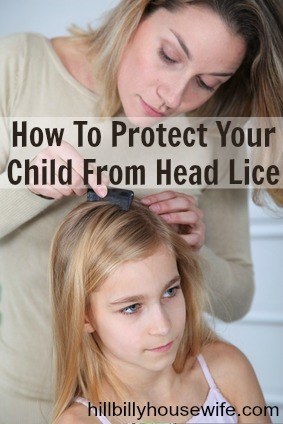Head Lice Is Everywhere – How To Protect Your Child
Head lice is a common occurrence in children. So, as your children head back to school this year, you will want to be on the lookout for these pesky critters. Head lice is common because you can find head lice anywhere. However, it tends to be passed around when kids are enclosed together in places like classrooms. With the start of school, the health departments always see an increase in incidents. What do we do about it?
Knowing some basics about head lice will help you deal with a lice infestation. We’ll take a look at what head lice is, how to recognize it, prevent it, and get rid of it. Let’s start by clearing up a few misconceptions.
The Cold, Hard Truth About Head Lice
These little irritants don’t care whose head they make their home on. Meaning that head lice are not attracted to dirty hair, bodies, clothes or homes; they are just want a warm head to leech onto. Just because you send your son or daughter to school all scrubbed up and shiny clean, doesn’t protect them against head lice in the least. Getting over this misconception is the first step to diagnosis and treatment.
Teach Your Children How To Prevent Head Lice
Help your kids avoid contracting head lice by explaining to them that head lice moves from person to person by direct contact. Head lice won’t jump across the room from one head to another. Instead, by wearing someone else’s hat or scarf or using another person’s brush or comb is a good way to contract head lice. Never share personal items. But, even that may not be enough to keep your child’s scalp safe. Nap mats, pillows, cots or tumbling mats may house lice, as well. Lice can be just about anywhere, on clean surfaces as well as soiled.
How Do You Know if Your Child Has Head Lice?
The two biggest symptoms of head lice is the feeling of something crawling around on your head and constant itching. Kids may not realize that these symptoms aren’t normal, so it’s your job to periodically check your child’s scalp for head lice. If you see your child scratching a lot, that’s the first indication that you may have a problem. You need to check your child’s head closely and see your doctor if head lice appears to be the problem. If the itching continues but you can’t see any signs of head lice, you may still want to visit your doctor just to double check because head lice aren’t always easy to see.
How to Spot a Head Lice Problem
The females lay tiny eggs on the scalp. The eggs are usually a tan or brownish in color and are often hard to see. Once these eggs hatch, the lice hang on to the strands of hair for dear life. The females continue laying batch after batch of eggs keeping the cycle going. Often the first thing spotted in the hair is the ‘nits’ which are the empty eggshells, since they are white in color. Sometimes the nits are mistaken for dandruff and dismissed. The difference is the ‘nits’ are quite sticky and adhere to the hair, while dandruff is dry and flakes off easily. Remember, check with your doctor to make sure.
Getting Rid of Head Lice

What if you spot head lice on child? What do you do now? First of all, DO NOT ignore it. If you don’t act promptly, you will be making a bad situation worse. Head lice can cause scalp infections if they are not removed as quickly as possible. See your doctor immediately for medical advice.
Many times your doctor will recommend RID (which contains lindane) to remove the infestation. RID kills all lice including adults, hatchlings, and eggs. Next, wash all bedding, combs, brushes, clothing and anything else your child’s head may have come into contact with in order to remove any eggs. You can add Lysol cleaner to the washing machine to help kill the lice in the wash water. Carpets and furniture should be vacuumed and shampooed regularly. This is not an overnight process. Be prepared for weeks of repeated cleaning.
If you prefer to use a home remedy rather than harsh chemicals to get rid of lice, you can try combing Tea Tree Oil through the hair and massage into the scalp. Tea Tree Oil is a natural antiseptic and may help kill the lice. The infestation has to be stopped one way or another in order to prevent infection. Give the remedy a few days to work but do not stick with a system that isn’t working. So, if you don’t see results in a day or two, you may want to go with a stronger option.
The important thing, no matter what method you use, is the removal of lice from the hair. It’s not an easy task, but it’s well worth the effort when you finally see your child with a happy face and a healthy scalp!
To support the blog, check out the HBHW eBooks available on Amazon. Thank you!
Disclosure: Some of the links below are affilate links, meaning, at no additional cost to you, I will earn a commission if you click through and make a purchase.

